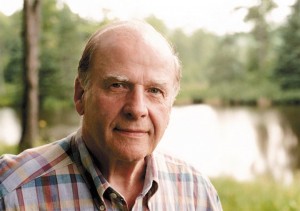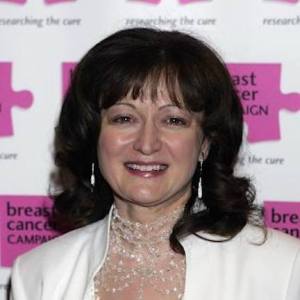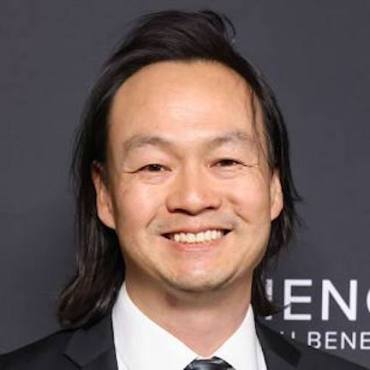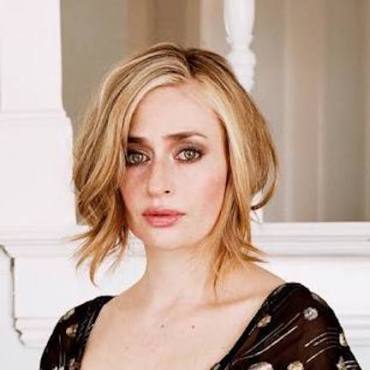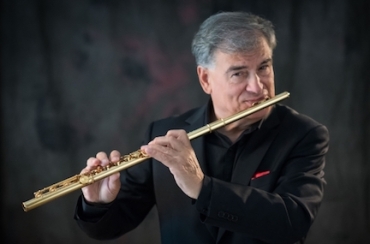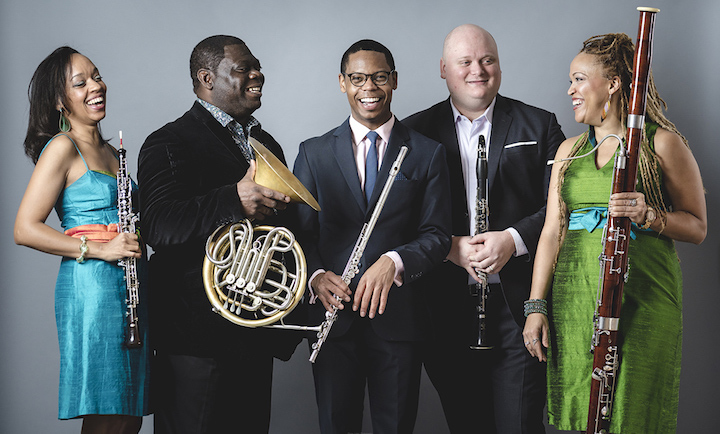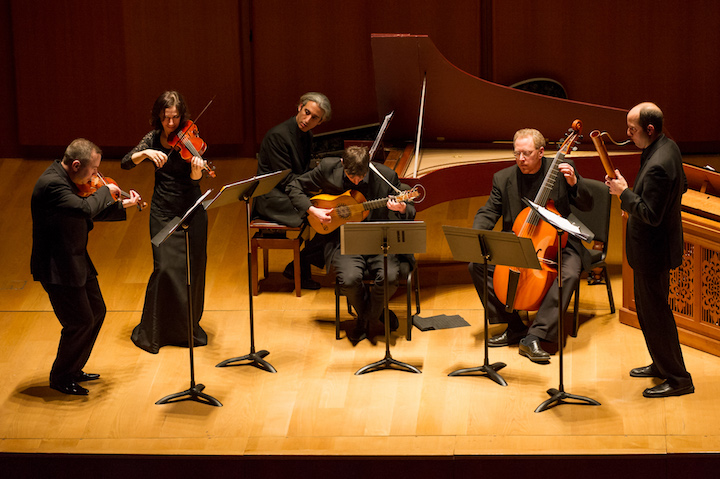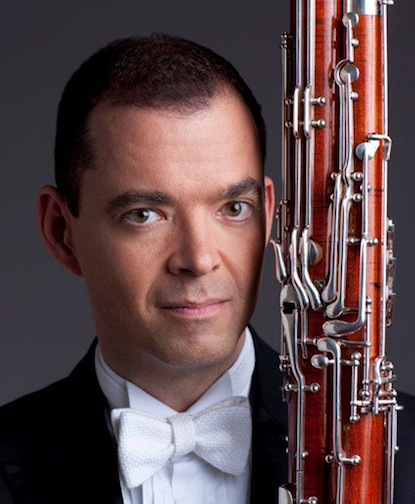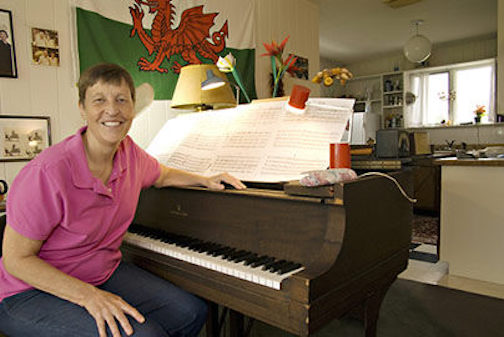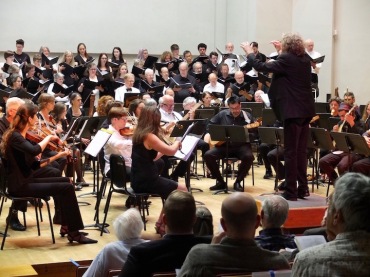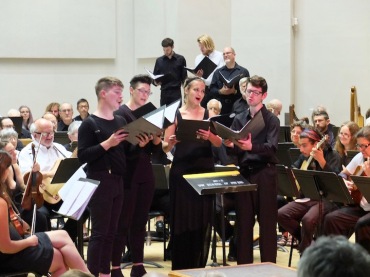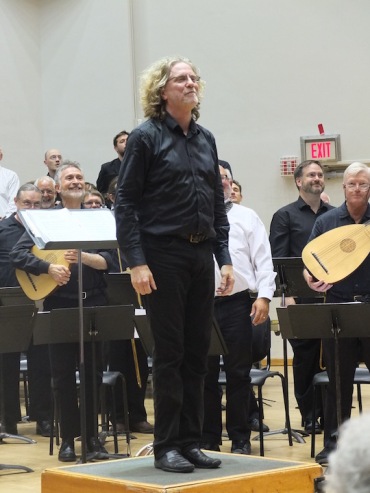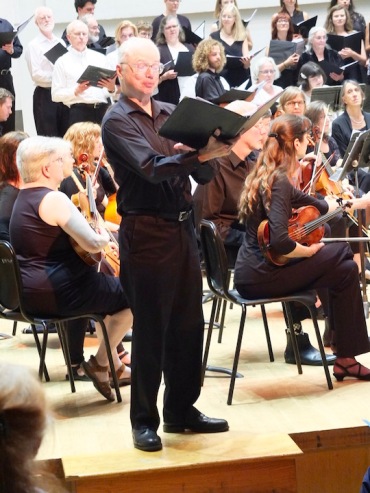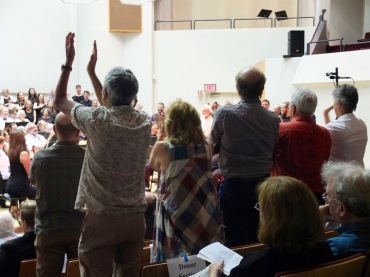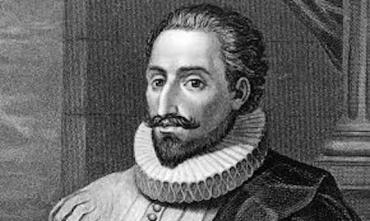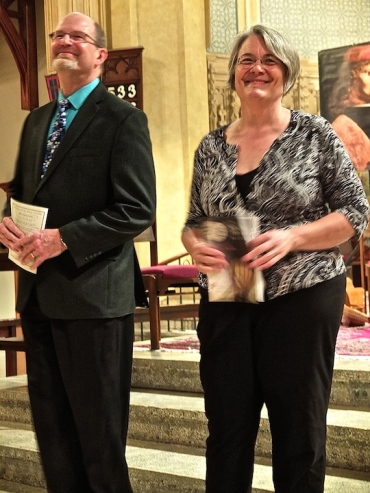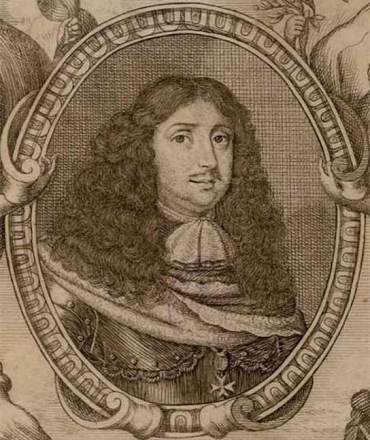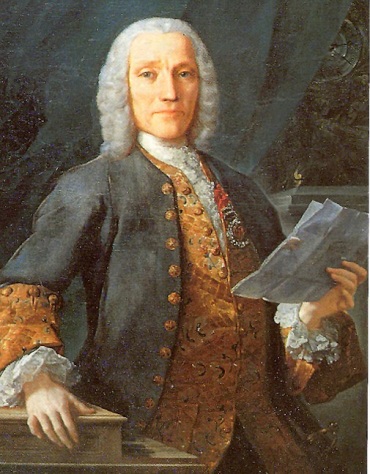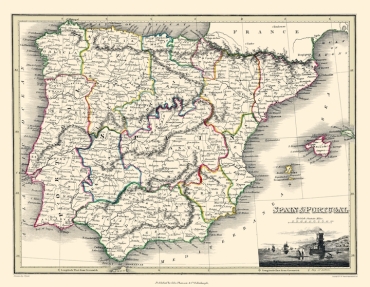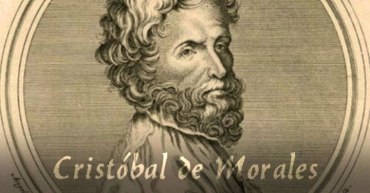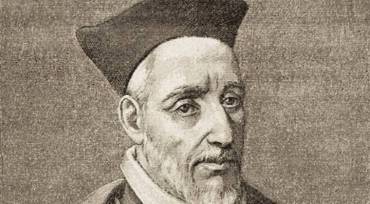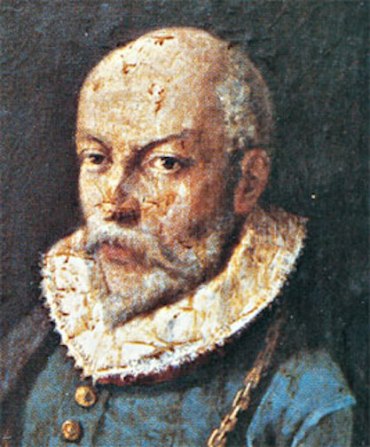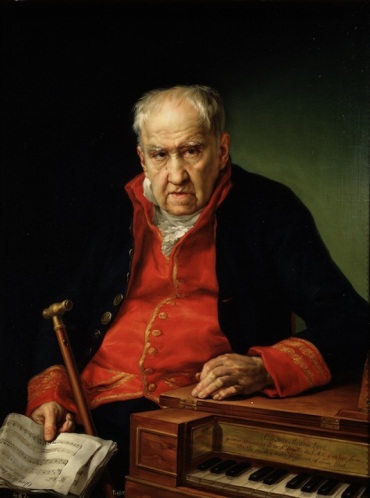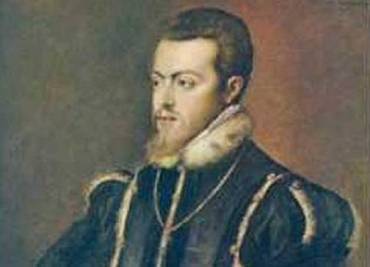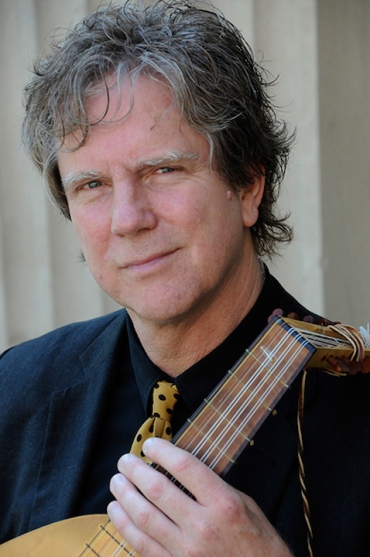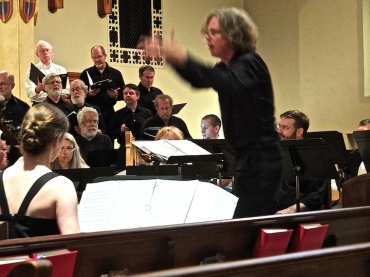The Well-Tempered Ear
A changing Earth demands changing music to mark Earth Day
1 Comment
PLEASE HELP THE EAR. IF YOU LIKE A CERTAIN BLOG POST, SPREAD THE WORD. FORWARD A LINK TO IT OR, SHARE IT or TAG IT (not just “Like” it) ON FACEBOOK. Performers can use the extra exposure to draw potential audience members to an event. And you might even attract new readers and subscribers to the blog.
By Jacob Stockinger
Today — Saturday, April 22 — is Earth Day 2023.
It is the 53rd annual celebration of the environment that was started on this date in 1970 by the former Wisconsin governor and U.S. Senator Gaylord Nelson (below bottom).
As the website “Self-Help Africa” says: “Earth Day is an annual event on April 22 to highlight environmental issues across the planet and demonstrate support for environmental protection.
“First held in the United States on April 22, 1970, it has since become THE BIGGEST SECULAR CELEBRATION OBSERVATION DAY IN THE WORLD, and an opportunity to highlight the issues and environmental challenges affecting our world.”
Here is the official Earth Day website: https://www.earthday.org/
Music has always been part of how the world celebrates the event.
But lately the trend in music seems to parallel the trends in the global warming crisis and species extinctions.
So, for example, in British composer Debbie Wiseman’s “Carnival of the Endangered Animals” in 2022 is meant to parallel but update the famous “Carnival of the Animals” by Camille Saint-Saëns.
Other titles of works by contemporary composers that reflect current realities about the natural world are: “The Lost Birds” by American composer Christopher Tin (below top); “Mass for the Endangered” by American composer Sarah Kirkland Snider (below middle); “The Rising Sea” Symphony by British composer Kieran Brunt; and “Glaciers in Extinction” by Italian flutist and composer Roberto Fabbriciani (below bottom).
You can hear these and other contemporary works plus a more familiar and traditional musical celebration of the Earth and nature by Beethoven. Just go this site for Colorado Public Radio:
Do you have a favorite among the new pieces?
Is there other music you think is appropriate to celebrate Earth Day and the natural world as they exist today?
What composers and pieces do you suggest listening to?
The Ear wants to hear.
Tags: #BlogPost, #BlogPosting, #FacebookPost, #FacebookPosting, #HealthCrisis, #YouTubevideo, Africa, America, American, animals, Arts, Asia, asian, audience, birds, blog, Britain, Brunt, Camille Saint-Saëns, Carnival, Carnival of the Animals, celebrate, celebration, Cello, Chamber music, change, changing, China, Chinese, choral music, Christopher Tin, Classical music, climate change, Colorado, Colorado Public Radio, composer, Concert, contemporary composers, contemporary music, CPR, crisis, Debbie Wiseman, Earth, Earth Day, endangered, England, environment, environmental, event, extinction, Facebook, favorite, flute, flutist, France, French, Gaylord Nelson, glacier, global warming, governor, habitat, hear, issue, Italian, Italy, Jacob Stockinger, Kieran Brunt, link, Ludwig van Beethoven, Madison, mass, Music, National Public Radio, natural world, nature, NPR, opera, Orchestra, Piano, piece, planet, protection, public radio, Radio, realities, reality, rising sea level, Roberto Fabbriciani, Sarah Kirkland Snider, sea, secular, Self-Help Africa, senator, share, species, support, symphony, tag, The Ear, traditional, U.K., U.S., UK, United States, Viola, Violin, vocal music, Wisconsin, YouTube
Bach Around the Clock 2021 will incorporate many new aspects – including more audiences and artists of color — into the 10-day free virtual festival that runs March 17-26
Leave a Comment
PLEASE HELP THE EAR. IF YOU LIKE A CERTAIN BLOG POST, SPREAD THE WORD. FORWARD A LINK TO IT OR, SHARE IT or TAG IT (not just “Like” it) ON FACEBOOK. Performers can use the extra exposure to draw potential audience members to an event. And you might even attract new readers and subscribers to the blog.
By Jacob Stockinger
The Ear has received the following update about Bach Around the Clock (BATC), the annual March free event to celebrate the birthday of Johann Sebastian Bach (below). Like last year, the year’s will be virtual and online and spread out over 10 days, from March 17 to March 26.
The BATC 2021 Festival is shaping up brilliantly. We have about 50 participants signed up so far, with musical selections totaling more than eight hours.
As always, it has a nice mix of ages and levels of performers, from young students to seasoned professionals. It also runs from traditional instruments like the violin, viola, cello, oboe, bassoon, piano and organ as well as the human voice to more unusual instruments like the clavichord, 6-string electric bass and a saxophone quartet.
We are so grateful to all the participants who have volunteered to share their talents. (Below is the Webb Trio playing last year from home.)
Last year’s virtual format forms the basis of this year’s festival, but we’ve expanded on that in some very exciting ways.
BATC board member Melanie de Jesus (below) is producing two mini-films aimed at making the festival more accessible to participants. For the tech-challenged among us, the “How to Film Yourself” video will make it easier for musicians to participate virtually.
This film will be available this THURSDAY, Feb. 25, in time to help participants film and submit their performances by the March 5 deadline. Would you like to perform? For information about signing up for slots. Click here to let us know!
Make your own recording or request a time slot at a BATC venue where a professional videographer will create a recording for you to keep. Harpsichord, piano and organ are available.
Melanie’s “Bach for Kids” film will be published during the festival, and will introduce basic musical concepts to the youngest participants. It will culminate in a sing-along, play-along, dance-along performance of some simple Bach tunes, as demonstrated by some (very) young students at the Madison Conservatory, where de Jesus is the director.
Another significant new element of this year’s festival will be our evening Zoom events, including receptions with performers, and guest artists giving special performances, lecture/demos, master classes and panel discussions.
In keeping with this year’s theme of “Building Bridges Through Bach,” we will celebrate and feature musicians and guest artists of color.
We are thrilled to announce Wisconsin Public Radio music host Jonathan Overby (below) as our keynote speaker. Overby’s work to research and demonstrate how music, especially sacred music, serves as a cultural bridge, has taken him all over the planet. His core values are in close alignment with the theme of this year’s festival, and his address will set the tone for the rest of the festival.
The virtual format enables us to bring in guest artists from afar. Lawrence Quinnett (below), on the piano faculty of Livingstone College, a private, historically black college in Salisbury, North Carolina, will perform all six French Suites, and give a brief talk on his approach to ornamentation. (You can hear Quinnett performing French Suite No. 1 by Bach in the YouTube video at the bottom.)
Clifton Harrison (below, in photo by Stephen Wright), violist in the Kreutzer String Quartet, in residence at Oxford University in England, will give a master class for interested BATC participants. Information on how to audition for this opportunity will be shared very soon.
We are extremely pleased that Trevor Stephenson (below), artistic director of the Madison Bach Musicians, will give an evening lecture and demonstration on the Goldberg Variations.
Through his performances, interviews and extremely popular pre-concert lectures, Trevor has served as a very important builder of bridges to the music of J.S. Bach in Madison and beyond. It would be hard to overstate the impact of Trevor’s work to make Bach’s music accessible to local audiences of all ages and backgrounds. We’re sure viewers will enjoy this event.
An astonishing new development resulted from BATC’s outreach efforts to local high schools: Steve Kurr (below), orchestra director at Middleton High School and former conductor of the Middleton Community Orchestra, decided to incorporate BATC into his curriculum this semester.
Fifteen of his students will perform for BATC, filmed by four other students, and then the students will all view the performances and write essays about them.
BATC is delighted with this creative initiative, looks forward to receiving the videos from this cohort of students, and hopes to expand on this kind of outreach in future years. Maybe we can include the final essays on our website, if the students agree.
There are a few other ideas still under construction; perhaps a panel discussion with educators, or one with local musical bridge-builders (aka “Angels in our Midst”)?
Please help us keep this festival free and open to all.
Bach Around The Clock is a unique program in our community. It offers everyone the opportunity to share their love of the music of Bach. There is no charge to perform or to listen.
But the festival is not free to produce! BATC provides venues, instruments, videographers, editors, and services for performers and audience.
We need your support!
Click on there link below to donate securely online with a PayPal account or credit card: https://www.paypal.com/donate/?cmd=_s-xclick&hosted_button_id=WU7WWBW5LBMQJ
Or you can make a check out to Bach Around The Clock and mail it to: Bach Around The Clock, 2802 Arbor Drive #2, Madison, WI 53704
Bach Around The Clock is a 501(c)(3) organization; your donation is tax-deductible as allowed by the law. Donors will be listed on the acknowledgments page of the BATC website .
For the latest updates, please visit our website, bachclock.org, or our Facebook page, facebook.com/batcmadison.
We hope you will join us.
Marika Fischer Hoyt, Artistic Director, Bach Around The Clock, (608) 233-2646
Tags: "Goldberg" Variations, #501(c)(3), #ArtisticDirector, #BachAroundtheClock, #BachforKids, #BaroqueMusic, #BaroqueOrnamentation, #BlackCollege, #BlogPost, #BlogPosting, #BoardofDirectors, #BuildingBridgesThroughBach, #ChamberMusic, #ChoralMusic, #CityofMadison, #CliftonHarrison, #CoreValues, #CreditCard, #FacebookPost, #FacebookPosting, #FrenchSuites, #Goldberg"Variations, #GuestArtist, #HighCulture, #HigherGround, #HistoricallyBlackCollegesandUniversities, #HomeWebpage, #HomeWebsite, #InstrumentalMusic, #JacobStockinger, #JohannSebastianBach, #JonathanOverby, #KeynoteSpeaker, #KreutzerStringQuartet, #LawrenceQuinnett, #LivingstoneCollege, #MadisonBachMusicians, #MadisonConservatoryofMusic, #MadisonSymphonyOrchestra, #MadisonWisconsin, #MakeMusicMadison, #MarikaFischerHoyt, #MeadWitterSchoolofMusic, #MelaniedeJesus, #MiddletonCommunityOrchestra, #MiddletonHighSchool, #MusicEducation, #NonprofitOrganization, #NorthCarolina, #OfColor, #OnlineConcert, #OnlineFestival, #OxfordUniversity, #PanelDiscussion, #PayPal, #PianoFaculty, #Pre-concertLecture, #Quartet-in-Residence, #SacredMusic, #SaxophoneMusic, #SecularMusic, #SteveKurr, #StringQuartet, #TheEar, #TheUK, #TheUW, #TimeSlot, #TrevorStephenson, #VirtualConcert, #VocalMusic, #WisconsinChamberOrchestra, #WisconsinPublicRadio, #YouTubevideo, #ZoomMeeting, 501(3)(c), accessible, address, afar, age, aim, alignment, angels, annual, another, approach, artist, Artistic director, Arts, astonishing, audience, audition, Bach, Bach Around the Clock, Bach for Kids, background, Baroque, Baroque music, Bassoon, bassoonist, BATC, beyond, birthday, black college, blog, Blog post, blog posting, board member, bridges, brillitant, buikding, Building Bridges Through Bach, celebrate, cellist, Cello, challenge, Chamber music, choral music, Chorale, Christian, church, Classical music, clavichord, click, Clifton Harrison, composer, Concert, conductor, core values, creative, credit card, cultural, culture, curriculum, dance, dance-along, day, deadline, decide, delight, demo, demonstrate, demonstration, development, director, donate, donation, Early music, easier, eassy, editor, electric bass, element, England, enjoy, evening, exciting, expand, Facebook, feature, festival, film, format, free, French Suites, future, grateful, guest, guest artist, hard, harpsichord, HBUC, help, Higher Ground, historically, historically black universities and colleges, Home, home website, hope, hours, human, human voice, impact, incorporate, information, instrument, instrumental, instrumental music, interview, Jacob Stockinger, Johann Sebastian Bach, Jonathan Overby, keynote, kids, kind, know, Kreutzer String Quartet, Lawrence Quinnett, lecture, level, link, Livingstone College, local, Lutheran, Madison, Madison Bach Musicians, Madison Conservatory of Music, Madison Symphony Orchestra, mail, make, march, Marika Fischer Hoyt, master class, masterclass, Mead Witter School of Music, Melanie de Jesus, Middleton Community Orchestra, Middleton High School, mix, Music, Music education, musical, Musician, new, Nice, nonprofit, Nonprofit organization, North Carolina, of color, online, opportunity, Orchestra, organ, organist, ornamentation, outreach, overstate, overstatement, Oxford University, panel discussion, participants, performance, performer, Pianist, Piano, piano faculty, planet, play, play-along, pleased, popular, post, posting, pre-concert lecture, private, produce, professional, Quartet, reception, recording, research, residence, sacred, sacred music, Salisbury, Saxophone, seasoned, secular, secular music, selections, semester, services, share, sign-up, significant, simole, sing-along, Singing, slot, Sonata, soon, speaker, Steve Kurr, String quartet, Student, submit, talent, tax-deductible, teach, Teacher, technical, technology, The Ear, theme, thrilled, time slot, tone, total, traditional, Trevor Stephenson, tunes, UK, United States, University of Wisconsin-Madison School of Music, University of Wisconsin–Madison, unusual, update, US, UW, UW-Madison, venue, video, videographer, Viola, Violin, violinist, violist, virtual, visit, vocal music, voice, volunteer, way, Website, Wisconsin, Wisconsin Chamber Orchestra, wisconsin public radio, work, write, year, you, young, yourself, YouTube, Zoom
Classical music: Starting Wednesday, the second LunART Festival will again spotlight women in the performing and creative arts. Here is the first of a two-part preview
Leave a Comment
IF YOU LIKE A CERTAIN BLOG POST, PLEASE SPREAD THE WORD. FORWARD A LINK TO IT OR, SHARE or TAG IT (not just “Like” it) ON FACEBOOK. Performers can use the extra exposure to draw potential audience members to an event.
By Jacob Stockinger
The Ear has received a long and detailed announcement about the upcoming second LunART Festival. Here is Part 1 with background and participants. Tomorrow will be Part 2 with more information about new music and a schedule of events.
The LunART Festival is back for its second season from this Wednesday, June 5, through Sunday, June 9, and will continue its mission of supporting, inspiring, promoting and celebrating women in the arts.
The 2019 season brings 10 events to eight venues in the Madison area, providing accessible, high-quality, engaging concerts and events with diverse programming from various arts fields.
The festival will showcase over 100 artists this season, including many familiar local artists and performers as well as guest artists hailing from Missouri to Texas, Minnesota to Florida and as far away as Peru.
LunART’s inaugural 2018 season was a success on numerous fronts. From showcasing a wide variety of artists and arts disciplines to building lasting relationships and collaborations, LunART has distinguished itself from other arts events in Madison.
Both artists and audiences have commented that the LunART atmosphere is one of camaraderie, love and acceptance. Festival directors Iva Ugrcic and Laura Medisky (below right and left, respectively) have set this season to come back even stronger, with expanded dates and more diverse programming.
Like last year, the three ticketed evening gala concerts are centered on classical chamber music. Other art forms — including contemporary and aerial dance, poetry, spoken word and visual arts — are interwoven throughout the programs to create a unique atmosphere for performers, artists and audiences.
This year’s Grammy-nominated composer-in-residence is flutist Valerie Coleman (below), a former member of Imani Winds, who was described as one of the “Top 35 Female Composers in Classical Music” by The Washington Post.
Coleman embodies LunART’s vision by challenging norms and being a strong advocate for diversity in the arts. Her rich compositional output infuses elements of jazz and African secular music into the Western classical tradition, creating a soundscape that honors both worlds. (In the YouTube video at the bottom, you can hear Valerie Coleman playing her own composition “Fanmi Imen” at the 2018 convention of the National Flute Association.)
Coleman’s music will be featured throughout the festival among the works of other remarkable women who shaped music history, from Baroque composer Barbara Strozzi to Romantic composer Clara Schumann to living composer Missy Mazzoli.
Drawing from Madison’s rich arts scene and community, LunART 2019 features local artists including: former Madison poet laureate Andrea Musher (below); actor and theater artist Deborah Hearst; choreographers and dancers Liz Sexe and Kimi Evelyn; and aerial dancer Linda DiRaimondo.
Also featured are musicians from arts organizations such as Madison Symphony Orchestra, Wisconsin Chamber Orchestra, Fresco Opera Theatre, Arbor Ensemble, Madison New Music Ensemble and Sound Out Loud Contemporary Music Collective. Under the direction of Edgewood College professor Kathleen Otterson, Madison’s only women’s choir ARTemis Ensemble returns in greater numbers and will present a work by LunART 2018 “From Page to Stage” alum Meg Huskin among others.
Visual art will have a stronger presence in the 2019 Festival. From May 11-July 7, Overture’s Playhouse Gallery will house “Women Against Hate United by Love,” a collaborative, traveling art exhibition and multi-step “anti-hate” campaign united against bigotry, intolerance and racism, created by J. Leigh Garcia (below), Rachael Griffin and Kelly Parks Snider.
A gallery reception on Wednesday, June 5, serves as LunART’s opening event, in which Snider will give a talk about the exhibit and her use of art to educate communities about targeted issues in the hopes of shaking up the status quo. This engaging and thought-provoking exhibit is meant to provide a meaningful and hopeful community experience for all who attend.
In collaboration with Studio 84 and ArtWorking, two nonprofit art studios specializing in the creative development of people with disabilities, the final Gala concert at First Unitarian Society of Madison, 900 University Bay Drive, on Saturday, June 8, will showcase 40 artworks. This exhibit will feature 20 women artists whose works will be displayed, flanking the Atrium Auditorium stage as well as in the lobby.
Tomorrow: New music to be premiered, comedy and the full schedule of events
Tags: #AfricanMusic, #AndreaMusher, #ArborEnsemble, #ARTemisEnsemble, #ArtExhibit, #ArtExhibition, #ArtForm, #ArtWorking, #ArtWorks, #AtriumAuditorium, #BarbaraStrozzi, #BaroqueMusic, #BlogPost, #BlogPosting, #CelebratingWomen, #ChamberMusic, #ClaraSchumann, #Composer-in-Residence, #ContemporaryMusic, #CulturalDiversity, #DeborahHearst, #EdgewoodCollege, #EthnicDiversity, #FacebookPost, #FacebookPosting, #FemaleComposer, #FeministArt, #FirstUnitarianSocietyofMadison, #FluteMusic, #FrescoOperaTheatre, #FromPagetoStage, #GenderDiversity, #GrammyAward, #GrammyNominations, #GuestArtist, #High-Quality, #ImaniWinds, #J.LeighGarcia, #JazzMusic, #KathleenOtterson, #KellyParksSnider, #KimiEvelyn, #LindaDiRaimondo, #LivingComposer, #LizSexe, #LunARTFestival, #MadisonNewMusicEnsemble, #MadisonSymphonyOrchestra, #MeadWitterSchoolofMusic, #MegHuskin, #MeToo, #MeToomovement, #MissyMazzoli, #MusicHistory, #NationalFluteAssociation, #NewMusic, #NonprofitOrganization, #OpeningNight, #OvertureCenter, #PoetLaureate, #RachelGriffin, #RomanticMusic, #SaturdayNight, #SecularMusic, #SoundOutLoud, #SpokenWord, #StatusQuo, #Studio84, #TheEar, #ThePlayhouse, #TheWashingtonPost, #ThoughtProvoking, #UniversityofWisconsin-Madison, #ValerieColeman, #VisualArts, #WindMusic, #WisconsinChamberOrchestra, #Women'sChoir, #WomenArtists, #YouTubevideo, accessible, accpetance, Actor, actress, advocate, aerial, African, all-women, alum, alumna, Andrea Musher, announcement, Arbor Ensemble, area, art exhibition, art form, Art Works, ARTemis Ensemble, artists, Arts, atmosphere, Atrium Auditorium, audience, background, Barbara Strozzi, Baroque, bigotry, blog, camaraderie, campaign, celebrating, Cello, challenging, Chamber music, choral music, choreographer, Clara Schumann, Classical music, classicalmusic, collaborative, comedy, community, composer, Composition, Concert, contemporary, contemporary music, convention, create, dance, dancer, dates, Deborah Hearst, detail, disabilities, disciplines, diverse, diversity, Early music, Edgewood College, educate, engaging, ethnic, evening, event, exhibit, expand, experience, Facebook, female, female composer, feminism, feminist, fina, final gala, First Unitarian Society of Madison, Florida, flute, flutist, forward, Fresco Opera Theatre, From Page to Stage, fronts, gala, gallery, gender, Grammy, Grammy Award, guest artist, hate, History, honor, hope, hopeful, Imani Winds, information, inspiring, intolerance, J. Lee Garcia, Jacob Stockinger, Jazz, Kathleen Otterson, Kelly Parks Snider, Kimi Evelyn, like, Linda DiRaimondo, link, Living composer, Liz Sexe, lobby, local, Love, LunART Festival, Madison, Madison New Music Ensemble, Madison Symphony Orchestra, Me Too, Mead Witter School of Music, Meg Huskin, Minnesota, mission, Missouri, Missy Mazzoli, Music, music history, National Flute Association, New Music, nominations, nonprofit, norms, numbers, opening, Overture Center, page, part, participants, People, performer, Peru, Piano, Playhouse, Poet laureate, Poetry, professor, programming, race, Rachel Griffin, racism, reception, rich, Romantic, Romanticism, Saturday, scene, schedule, second, secular, shake up, share, showcase, Sound Out Loud, soundscape, spoken word, stage, status quo, strong, studio, Studio 84, success, supporting, tag, talk, target, Texas, The Ear, The Washington Post, thought provoking, ticket, tomorrow, tradition, traveling, united, United States, University of Wisconsin-Madison School of Music, University of Wisconsin–Madison, VALERIE COLEMAN, venue, Viola, Violin, vision, visual arts, vocal music, Wednesday, Western, winds, Wisconsin, Wisconsin Chamber Orchestra, women, women artists, women;s choir, world, YouTube
Classical music: Prize-winning composer John Harbison has turned 80. In February, Madison will see many celebrations of his birthday, starting this Friday night with the Imani Winds
Leave a Comment
IF YOU LIKE A CERTAIN BLOG POST, PLEASE SPREAD THE WORD. FORWARD A LINK TO IT OR, SHARE or TAG IT (not just “Like” it) ON FACEBOOK. Performers can use the extra exposure to draw potential audience members to an event.
By Jacob Stockinger
This Friday night, Feb. 1, a month-long celebration in Madison of the 80th birthday of critically acclaimed and prize-winning composer John Harbison (below) gets underway.
The festivities start with a concert by the Grammy-nominated Imani Winds (below), which will perform this Friday night at 7:30 p.m. – with a pre-concert lecture at 6 p.m. — in Shannon Hall at the Wisconsin Union Theater. The program includes Harbison’s popular Wind Quintet.
Here is a link with more information about the group, the program and tickets: https://union.wisc.edu/events-and-activities/event-calendar/event/imani-winds/
Among America’s most distinguished artistic figures, Harbison is the recipient of numerous awards and honors, among them a MacArthur ”genius grant’ and a Pulitzer Prize. His work encompasses all genres, from chamber music to opera, sacred to secular. (You can hear Harbison discuss his approach to composing in the YouTube video at the bottom.)
He has composed for most of America’s premiere musical institutions, including the Metropolitan Opera, the symphony orchestras of Chicago, Boston, Los Angeles, Seattle and New York; and the Chamber Music Society of Lincoln Center and the Santa Fe Chamber Music Festival.
Institute Professor at MIT, Harbison serves as composer, conductor, performer, teacher and scholar. He divides his time between Cambridge, Mass., and Token Creek, Wis., where he co-founded and co-directs a summer chamber music festival with his violinist wife Rose Mary Harbison.
Other local birthday events include a performance by the Madison Symphony Orchestra; several chamber music and choral concerts at the First Unitarian Society of Madison, including one by the Mosaic Chamber Players; an exhibition of books and manuscripts at the Mills Music Library at UW-Madison’s Memorial Library.
There are also several concerts, including the world premiere of a new Sonata for Viola, and a composer residency at the University of Wisconsin-Madison’s Mead Witter School of Music; and the world premiere of a new motet by the Madison Choral Project.
Harbison will also be featured in radio interviews and broadcast retrospectives by both Wisconsin Public Radio and WORT community radio.
National and international celebrations include other world premieres of commissions, many new recordings and the publication of Harbison’s autobiographical book about Johann Sebastian Bach, “What Do We Make of Bach?”
For more details about the many local celebrations, you can go to the following two links. Schedules, programs and updates – events are subject to change — will be posted at www.tokencreekfestival.org and www.johnharbison.com.
To receive “Harbison Occasions,” an intermittent e-newsletter, write to arsnova.artsmanagement@gmail.com
Tags: #ArtisticWork, #BaroqueMusic, #BlogPost, #BlogPosting, #BostonSymphony, #CambridgeMassachusetts, #ChamberMusic, #ChamberMusicSocietyofLIncolnCenter, #ChicagoSymphonyOrchestra, #ChoralMusic, #CriticallyAcclaimed, #EmailNewsletter, #FacebookPost, #FacebookPosting, #FirstUnitarianSocietyofMadison, #GeniusGrant, #GrammyAward, #GrammyNominations, #HomeWebsite, #husband-and-wife, #ImaniWinds, #JohannSebastianBach, #JohnHarbison, #LincolnCenter, #LivingComposer, #LosAngeles, #LosAngelesPhilharmonic, #MacArthurFellow, #MacArthurFoundation, #MadisonChoralProject, #MadisonSymphonyOrchestra, #MassachusettsInstituteofTechnology, #MeadWitterSchoolofMusic, #MemorialLibrary, #MetropolitanOpera, #MillsMusicLibrary, #MosaicChamberPlayers, #MusicCritic, #NewMusic, #NewYorkPhilharmonic, #OperaMusic, #PopularMusic, #Prize-Winning, #PulitzerPrize, #RoseMaryHarbison, #SacredMusic, #SantaFe, #SantaFeChamberMusicFestival, #SeattleSymphony, #SecularMusic, #ShannonHall, #SymphonyOrchestra, #TheMet, #TokenCreek, #TokenCreekChamberMusicFestival, #UniversityofWisconsin-Madison, #ViolaSonata, #WindQuintet, #WisconsinPublicRadio, #WisconsinUnionTheater, #WorldPremiere, #WORT-FM89.9, 80, acclaimed, America, artistic, Arts, audience, autobiographical, autobiography, Bach, Baroque, birthday, blog, Book, books, Boston, Boston Symphony, Broadcast, Cambridge Massachusetts, celebration, Chamber music, Chamber Music Society of Lincoln Center, Chicago, Chicago Symphony Orchestra, Choir, choral, choral music, Classical music, commission, community, Compact Disc, composer, Concert, conductor, Early music, email, Facebook, festival, figure, First Unitarian Society of Madison, forward, Friday, genius grant, genre, Grammy, group, Imani Winds, information, international, interview, Jacob Stockinger, Johann Sebastian Bach, John D. and Catherine T. MacArthur Foundation, John Harbison, like, LIncoln Center, Lincoln Center for the Performing Arts, link, Living composer, Los Angeles, Los Angeles Philharmonic, MacArthur Fellow, MacArthur Foundation, Madison, Madison Choral Project, Madison Symphony Orchestra, manuscripts, Massachusetts Institute of Technology, Mead Witter School of Music, Memorial Library, Metropolitan Opera, Mills Music Library, MIT, month, Mosaic Chamber Players, motet, Music, music critic, national, new, New Music, New York City, New York Philharmonic, New York Philharmonic Orchestra, newsletter, NPR, opera, Orchestra, performer, popular, post, posting, professor, program, Pulitzer Prize, Radio, recording, residency, retrospective, Rose Mary Harbison, sacred, sacred music, Santa Fe Chamber Music Festival, schedule, scholar, Seattle Symphony, secular, secular music, Shannon Hall, share, Sonata, summer, symphony, symphony orchestra, tag, Teacher, the Met, ticket, Token Creek, Token Creek Chamber Music Festival, Token Creek Festival, United States, University of Wisconsin-Madison School of Music, University of Wisconsin–Madison, update, UW-Madison, Viola, viola sonata, Violin, violinist, vocal music, Website, wife, Wind quintet, Wisconsin, wisconsin public radio, Wisconsin Union Theater, world premiere, WORT-FM 89.9, YouTube
Classical music: The FREE midday Just Bach concert series will continue through the second semester. November’s concert is TODAY at 1 p.m.
2 Comments
IF YOU LIKE A CERTAIN BLOG POST, PLEASE FORWARD A LINK TO IT OR, SHARE or TAG IT (not just “Like” it) ON FACEBOOK. Performers can use the extra exposure to draw potential audience members to an event.
By Jacob Stockinger
The new Just Bach series of hour-long, midday concerts (below, in a photo by John W. Barker) has reason to celebrate this holiday season.
It has been a success and has just announced that it will continue through the second semester. Next semester’s dates – all Wednesdays–are Jan. 23, Feb. 20, March 13, April 24 and May 29.
As usual, they will run from 1 to about 2 p.m. in Luther Memorial Church, 1021 University Avenue. Admission is FREE with good-will donations accepted. And audiences are permitted to eat and drink during the concert.
Two more concerts are left in this semester.
November’s concert takes place TODAY. The next concert is Dec. 12.
The program includes opening with organist Mark Brampton Smith (below playing the Fantasia in G Major, BWV 572. (You can hear the piece, with a scrolling score, in the YouTube video at the bottom.)
Soprano Sarah Brailey (below top) will be featured in the famous Cantata 82a “Ich habe genug” (I Have Enough). Brailey will then be joined by UW-Madison bass-baritone Paul Rowe (below bottom, in a photo by Michael R. Anderson) in Cantata 173a, “Durchlauchster Leopold” (Most Serene Leopold), a secular work written in 1722 for the birthday of Bach’s employer, Prince Leopold von Anhalt-Koethen.
The orchestra of baroque period-instrument specialists will be led by concertmaster Kangwon Kim (below), and will include traverso flutists Linda Pereksta and Elizabeth Marshall, who play modern piccolo and flute, respectively, in the Madison Symphony Orchestra.
The goal of this series is to share the immense range of Bach’s vocal and instrumental repertoire with the Madison community at large. The period-instrument orchestra will bring the music to life in the manner and style that Bach (below) would have conceived.
Members of the artistic team will prepare local singers to perform alongside seasoned professionals and develop a familiarity and love of the repertoire.
The audience will be invited to sing along during the opening hymns and the closing cantata chorales.
Adds founder and director Marika Fischer Hoyt (below), who plays baroque viola with Just Bach, Sonata a Quattro and the Madison Bach Musicians plus modern viola with the Madison Symphony Orchestra: “We are deeply grateful to Pastor Brad Pohlman and the congregation of Luther Memorial Church for hosting the series this Fall. We invite the Madison community to come spend a lunch hour with the sublime music of J.S. Bach – feed your body and soul!”
For more information, here is a link to the website: https://justbach.org
And if people want to follow Just Bach on Facebook, they can like our page at https://www.facebook.com/JustBachSeries
Tags: #BachCantata, #BaroqueMusic, #BaroqueViola, #BaroqueViolin, #BlogPost, #BlogPosting, #BradPohlman, #ChristianChurch, #ChristianReligion, #FacebookPost, #HistoricallyInformedPerformancePractices, #HolidaySeason, #InstrumentalMusic, #JohannSebastianBach, #JohnW.Barker, #JustBach, #KangwonKim, #LunchHour, #LutherMemorialChurch, #MadisonBachMusicians, #MadisonSymphonyOrchestra, #MarikaFischerHoyt, #MarkBramptonSmith, #MeadWitterSchoolofMusic, #MusicalStyle, #OrchestralAccompaniment, #OrchestralMusic, #PaulRowe, #PeriodInstruments, #SacredMusic, #SarahBrailey, #SecularMusic, #SonataaQuattro, #TraversoFlute, #UniversityofWisconsin, #UniversityofWisconsin-Madison, #VocalMusic, #Wednesdayafternoon, #YouTubevideo, amateur, Arts, audience, Bach, Baroque, bass-baritone, birthday, blog, body, Brad Pohlman, Cantata, Cello, Chamber music, choral music, Chorale, Christian, church, Classical music, community, composer, Concert, director, donation, drink, Early music, eat, employer, Facebook, faculty, fall, familiarity, famous, Fantasia, flute, free, good will, historically informed performance practices, Holiday, holiday season, hymn, instrumental music, Jacob Stockinger, Johann Sebastian Bach, John W. Barker, Just Bach, Kangwon Kim, Kim, like, local, Love, lunch, lunch hour, Luther Memorial Church, Madison, Madison Bach Musicians, Madison Symphony Orchestra, manner, Marika Fischer Hoyt, Mark Brampton Smith, Music, new, Orchestra, organ, pastor, Paul Rowe, period instruments, piccolo, post, posting, prepare, prince, professional, Religion, repertoire, sacred, Sarah Brailey, score, Season, secular, semester, serene, series, share, singer, Sonata, Sonata à Quattro, soprano, soul, style, success, tag, team, traverso, traverso flute, United States, University of Wisconsin-Madison School of Music, University of Wisconsin–Madison, UW-Madison, video, Viola, Violin, vocal music, web site, Website, Wednesday, Wisconsin, YouTube
Classical music: This Saturday, the 19th annual Madison Early Music Festival (MEMF) starts a week-long exploration of how the Lutheran Reformation and the invention of printing changed Western music 500 years ago. Part 1 of 2
1 Comment
By Jacob Stockinger
Starting this Saturday and running through the following Saturday, the 19th annual Madison Early Music Festival will explore the profound effects that the Lutheran Reformation had on Renaissance and Baroque music of the time.
The festival, to be held at the UW-Madison’s Mead Witter School of Music, is called “A Cabinet of Curiosities: A Journey to Lübeck.” For a complete listing of programs, lectures, concerts and workshops, with information about tickets, go to the website: https://memf.wisc.edu
Soprano Cheryl Bensman Rowe — who co-directs the festival with UW Arts Institute’s Sarah Marty and with her husband and UW-Madison baritone Paul Rowe — recently agreed to do a Q&A with The Ear about the upcoming festival. Here is Part 1 of 2. The second part will appear tomorrow.
How successful is this year’s festival compared to others in terms of enrollment, budgets, performers, etc.? How does MEMF’s reach nationally or even internationally compare to previous years?
Each year enrollment in the workshop averages 100 students. As of June 15, we have 110 students enrolled. MEMF attracts students of all ages, from 18–91, amateurs and professionals, from all over the country and Canada.
What is new and what is the same in terms of format, students, faculty members and performers?
The ensemble Quicksilver (below, in a photo by Ian Douglas, and located at quicksilverbaroque.com) is returning to Madison after several years to open the MEMF Concert Series.
This will be an incredible virtuosic display of chamber music played at the highest level, and includes violinist Julie Andrijeski, sackbut player Greg Ingles and gambist Lisa Terry; harpsichordist Avi Stein and violinist Robert Mealy are on the faculty at the Juilliard 415 program, which is creating a fantastic opportunity for instrumentalists to study Baroque music with some of the finest early music professionals in the country.
Piffaro, The Renaissance Band, will return to play a live concert of the CD they just released, Back to Bach. For more information, go to: piffaro.org
The Tuesday concert is at Luther Memorial Church. Abendmusik (Evening Music) features organists John Chappell Stowe (below top, in a photo by Katrin Talbot), of the UW-Madison, and James Kennerley (below bottom) joined by the MEMF Faculty.
Abendmusik, refers to a series of performances at the Marienkirche in Lübeck, Germany. In the 17th century through 1810, a series of concerts were paid for by local business owners to provide admission for the public. Organists Franz Tunder and his successor Dietrich Buxtehude, organized the Abendmusiken with performances of organ, instrumental and vocal music. For more, go to: https://www.jameskennerley.com/
New to MEMF, Schola Antiqua of Chicago — see schola-antiqua.org — will perform on Friday, July 13, at 7:30 p.m. in Mills Hall. They will sing musical treasures from a program prepared last fall for The Newberry Library’s exhibit “Religious Change 1450-1700” on the occasion of the quincentennial of the Lutheran Reformation.
Printed musical artifacts from the multidisciplinary exhibit testify to a period filled with religious dynamism and struggle with both theological and musical traditions. Their director, Michael Alan Anderson, will give a pre-concert lecture at 6:30 p.m. with projections of the printed music from The Newberry Library.
Why was the theme of “A Cabinet of Curiosities: Journey to Lübeck” chosen for the festival? What composers and works will be highlighted?
We chose the 2018 theme to explore the 500th anniversary of the Reformation, and how the shifts in religion and 16th-century printed materials, including music, changed the world.
The Marienkirche (St. Mary’s Church) in Lübeck was an important musical center at this time. Built with Catholic ritual in mind, it easily was turned into a Lutheran church in the early 16th century as Lübeck changed into a Protestant town due to the Reformation that was inspired by Martin Luther.
The composer Dieterich Buxtehude (below) was the organist at the Marienkirche and was an improvisational genius. He attracted many musicians throughout Europe to come and visit, including Johann Sebastian Bach, Georg Philipp Telemann and George Frideric Handel.
Around this same time collectors were sorting their wide-ranging collections of objects into “cabinets of curiosities,” and sometimes the categorical boundaries were not defined. With new-found compositional freedom, 17th-century composers similarly created many musical wonders and curiosities, stretching the boundaries of musical conversation.
We will be featuring works of Buxtehude, Tunder and Matthias Weckmann, and there will even be a bit of Bach on Sunday night’s concert by Piffaro.
Tomorrow: Part 2 – How did a Reformation in religion and printing technology change music?
Tags: #AmateurMusician, #ArtsInstitute, #BaroqueEra, #BaroqueMusic, #BusinessOwner, #CabinetofCuriosities, #ChamberMusic, #ChristianChurch, #ChristianMusic, #ChristianReligion, #ChurchMusic, #DietrichBuxtehude, #FacultyMember, #FranzTunder, #GeorgeFridericHandel, #GeorgPhilippTelemann, #GermanMusic, #InstrumentalMusic, #JamesKennerley, #JohannSebastianBach, #Juilliard415, #JuilliardSchool, #LiveConcert, #LutheranReformation, #LutherMemorialChurch, #MadisonEarlyMusicFestival, #MartinLuther, #MatthiasWeckmann, #MeadWitterSchoolofMusic, #NewberryLibrary, #OrganMusic, #PrintingTechnology, #ProfessionalMusician, #ProtestantReformation, #ProtestantReligion, #QuicksilverBaroque, #ReligiousChange, #RenaissanceBand, #RenaissanceMusic, #RomanCatholic, #SacredMusic, #ScholaAntiqua, #SecularMusic, #ThePublic, #TheReformation, #TheRenaissance, #UniversityofWisconsin, #UniversityofWisconsin-Madison, #VioladaGamba, #WesternCulture, #WesternMusic, #WesternReligion, admission, amateur, anniversary, Arts, Arts Institute, Bach, baritone, Baroque, blog, budget, Business, Canada, Catholic, Cello, Chamber music, Chicago, choral music, church, Classical music, Compact Disc, composer, Composition, Concert, country, Dietrich Buxtehude, director, Early music, earlymusic, enrollment, faculty, festival, Franz Tunder, free, freedom, genius, George Frideric Handel, Germany, Handel, harpsichord, improvisation, instrument, instrumental, international, invention, Jacob Stockinger, Johann Sebastian Bach, journey, lecture, live, Lubeck, Luther Memorial Church, Madison, Madison Early Music Festival, Marienkirche, Mead Witter School of Music, MEMF, Music, national, Newberry Library, Orchestra, organ, organist, Piffaro, player, printing, professional, program, public, Religion, Roman Catholic, sackbut, sacred, Schola Antiqua, secular, secular music, sing, singer, Sonata, song, soprano, Student, Sunday, technology, Telemann, theology, ticket, tradition, United States, University of Wisconsin-Madison School of Music, University of Wisconsin–Madison, UW-Madison, Viola, viola da gamba, Violin, violinist, virtuosic, virtuoso, vocal music, Website, Weckmann, Wisconsin, workshop
Classical music: A busy week at the UW spotlights choral and vocal music with some wind, brass and guitar music included
Leave a Comment
By Jacob Stockinger
It’s going to be a busy week at the University of Wisconsin-Madison’s Mead Witter School of Music.
And especially if you are a fan of choral music, there is much to attract you.
Here is run-down by the day:
TODAY
At 3 p.m. in Mills Hall is a FREE concert of Combined Choirs that features the Women’s Chorus (below), the University Chorus and the Masters Singers.
Sorry, no word about the program, but the groups’ past record suggests excellent programs are in store.
TUESDAY
From noon to 1:30 p.m. in Morphy Recital Hall, William Buchman (below), who is assistant principal bassoon of the Chicago Symphony Orchestra and a faculty member at DePaul University in Chicago, will give a master class that is FREE and OPEN TO THE PUBLIC.
At 7:30 p.m. in Music Hall on Bascom Hill, University Opera a FREE Fall Opera Scenes program with UW student singers (below form last year).
Featured are excerpts from four operas and one Broadway musical: “The Marriage of Figaro” by Wolfgang Amadeus Mozart; “Orpheus in the Underworld” by Jacques Offenbach; “Der Freischuetz” (The Marksman or Freeshooter) by Carl Maria von Weber; and “Carousel” by Rodgers and Hammerstein,
WEDNESDAY
At 7:30 p.m. in Mills Hall, the Wisconsin Brass Quintet (below, in a photo by Michael R. Anderson) will give a FREE concert.
Members of the faculty ensemble are Alex Noppe and Matthew Onstad, trumpets; Mark Hetzler, trombone; Tom Curry, tuba; and Daniel Grabois, horn.
The program includes: Johann Schein: Three Psalm Settings; Peter Maxwell Davies, arr. Matthew Onstad: “Farewell to Stromness” (1980), from The Yellow Cake Review; Jan Radzynski: Take Five (1984); Gunther Schuller’s Music for Brass Quintet (1961); and Alvin Etler’s Quintet for Brass Instruments (1966).
For more information, go to http://www.wisconsinbrassquintet.com
THURSDAY
From 10 a.m. until noon in Morphy Recital Hall, the acclaimed Grammy Award-winning guitarist Sharon Isbin (below), who will perform with the Madison Symphony Orchestra this coming weekend, will give a FREE master class that is OPEN TO THE PUBLIC.
FRIDAY
At 8 p.m. in Mills Hall, the Madrigal Singers (below top), under conductor Bruce Gladstone (below bottom, in a photo by Katrin Talbot), will present Part 2 of “Israelsbrünnlein” (Fountains of Israel) by the Baroque composer Johann Hermann Schein.
According to program notes, “Johann Hermann Schein’s collection of 26 motets from 1623 has long been considered the most important set of motets in the early 17th century. Schein (below), frustrated that there wasn’t a true counterpart of the Italian madrigal to be found in German music, set out to marry the expressiveness of the madrigal to German texts.
“In this case, he chose to set sacred and mostly biblical texts, rather than the secular poetry found in most madrigals. His set of spiritual madrigals display both moments of pure joy and exultation as well as heartbreaking sadness and longing.
“Last fall, the Madrigal Singers presented the first 13 of these motets, and this fall, we finish out the collection with motets 14-26.
“This music is incredibly moving and remarkably fresh, revealing a marked sensitivity to the texts and a mastery of musical expression.” (You can hear a sample in the YouTube video at the bottom.)
SATURDAY
At 8 p.m., in Luther Memorial Church (below), 1021 University Avenue, the Low Brass Ensemble will give a FREE recital. No word on composers or pieces on the program.
At 8 p.m. in Mils Hall, the group Chorale, under conductor Bruce Gladstone will present “Songs to Live By.”
Programs notes read: “Music has always had a way to touch our souls the way other things cannot. When paired with poetry that speaks honestly to the human condition, it can lift us out of the merely abstract, touching our souls and offering insight on how we can be better at being human and humane.
“The Chorale offers a choral song-cycle by composer Gwyneth Walker (below) on autobiographical poems by Virginia Hamilton Adair, as well as three works by Elizabeth Alexander: “How to Sing Like a Planet”; “If You Can Walk You Can Dance”; and “Finally On My Way To Yes.”
“Also on the program is Joshua Shank’s “Rules To Live By,” a heartfelt and moving piece whose text was written by the commissioning ensemble.
SUNDAY
At 5 p.m., in Mills Hall, the UW-Madison Wind Ensemble (below top) and Winds of Wisconsin will give a FREE joint concert.
Scott Teeple will conduct with guest violinist, Professor Soh-Hyun Altino (below bottom, in a photo by Caroline Bittencourt) soloing.
Here is the program:
UW-Madison Wind Ensemble:
“Fanfare for the Uncommon Woman, #2,” by Joan Tower
Concerto for Violin and Wind Ensemble, by Robert Hutchinson with the violinist Park Altino
Winds of Wisconsin:
“Chester Overture for Band,” by William Schuman
“A Child’s Embrace” by Charles Rochester Young
“Vesuvius,” by Frank Ticheli
Combined UW Wind Ensemble and Winds of Wisconsin:
“Folk Dances,” by Dmitri Shostakovich
Tags: abstract, acclaim, Alvin Etler, arranged, arrangement, Arts, assistant, avenue, award, band, Baroque, Bassoon, Bible, biblical, brass, Broadway, cake, Carousel, century, Chamber music, Charles Rochester Young, Chicago, Chicago Symphony Orchestra, Child, children, Choir, choral music, church, Classical music, collection, combined, composer, Concert, concerto, dance, DePaul University, Der Freischuetz, Dmitri Shostakovich, Early music, Elizabeth Alexander, embrace, ensemble, expression, expressiveness, exultation, faculty, Fanfare, farewell, Figaro, folk, fountain, Frank Ticheli, free, fresh, German, Germany, Grammy, guest, guitar, Gunther Schuller, Gwyneth Walker, Hammerstein, heartbreak, Horn, human, humane, important, insight, instrument, Israel, Jacob Stockinger, Jan Radzynski, Joan Tower, Johann Schein, joint, Joshua Shank, Joy, live, longing, Luther, Luther Memorial Church, Madison, Madison Symphony Orchestra, madrigal, Madrigal Singers, marksman, Marriage, Marriage of Figaro, Master, master class, masterclass, mastery, Mead Witter School of Music, motet, moving, Mozart, Music, musical, Musical theater, notes, Onstad, opera, Orchestra, Orpheus, Orpheus in the Underworld, Overture, part, Peter Maxwell Davies, photo, Poetry, principal, program, psalm, quintet, recital, review, Robert Hutchinson, Rodgers, Rodgers and Hammerstein, rule, sad, sadness, sample, scene, secular, sensitivity, Sharon Isbin, shooter, singer, solo, song, soul, spiritual, symphony, text, theater, theatre, Trombone, Trumpet, Tuba, uncommon, underworld, university, University of Wisconsin-Madison School of Music, University of Wisconsin–Madison, Vesuvius, Viola, Violin, Virginia Hamilton Adair, vocal music, von Weber, week, William Schuman, Wisconsin, Wisconsin Brass Quintet, woman, women, Writer, YouTube
Classical music: The 18th annual Madison Early Music Festival concludes its look at the Spanish Renaissance with another outstanding “concept concert” featuring all participants
1 Comment
By Jacob Stockinger
Nobody here does “concept concerts” better than the Madison Early Music Festival.
Proof came again last Saturday night in Mills Hall when the large forces of professional faculty members and workshop student participants (both below) joined to present a comprehensive overview of Renaissance music in Spain.
The program featured various combinations, including a quartet (below) as well as choral music and instrumental music. It offered sacred and secular fare, courtly music and folk music, Latin and vernacular Spanish.
Once again, the impressive program was assembled and conducted by Grant Herreid (below top) of the internationally acclaimed Renaissance band Piffaro (below bottom), a popular and regular guest at MEMF. (You can hear Piffaro perform music from the Spanish Renaissance in the YouTube video at the bottom.)
As in past years, history, biography, literature, religion and music get layered on top of each other and interwoven among each other. As a formula, from year to year the concept keeps getting refined and keeps succeeding.
In this case, the narration and story line centered on the surprisingly adventurous life of Spanish writer Miguel de Cervantes (below), who wrote the first important novel, “Don Quixote.”
Last year, the festival celebrated the 400th anniversary of the death of Shakespeare; this year, it was the 400th anniversary of the death of Cervantes.
The Ear really likes the format. The All-Festival concert ran 75 minutes and was done without intermission. Even if you are not a big fan of such early music, the concert was varied enough and short enough to hold your attention.
Unity was provided by excerpts from various texts of Cervantes, including “Don Quixote” as well as less well-known works. Some of his words were even substituted for other texts in songs and choruses.
The chorus and soloists sounded very well rehearsed, and the large instrumental section – with all those unusual-looking early instruments like sackbuts and shawms – was exceptional.
Herreid kept an outstanding sonic balance between the vocal and instrumental forces throughout the event.
There were quite a few narrators (below) who presented the short texts by Cervantes. And they proved the only weak point. Some people just don’t seem as up to the task as others do.
Perhaps in future years, the festival could pick, say, one man and one woman to alternate in the readings. The audience would have a better sense of their identities, and the effect would be better if the narrators were chosen for their ability to project dramatically and enunciate clearly but with expression – something that proved uneven with so many different narrators taking turns.
The Ear didn’t go to a lot of the festival events. He confesses that he is more a Baroque than a Renaissance person who looks forward to next year’s theme of “A Journey to Lübeck,” with German Renaissance and even Baroque music, especially music by Dietrich Buxtehude. (The 19th annual festival will be held July 7-14, 2018.)
But this final wrap-up concert is proof that even if very early music is not your thing, you shouldn’t miss the final event.
The All-Festival concert really is a MUST-HEAR.
You learn a lot.
And you enjoy even more.
Certainly the audience seemed to agree.
Were you there?
What did you think?
The Ear wants to hear.
Tags: adventure, Arts, audience, balance, band, Baroque, Baroque violin, biography, Cello, Cervantes, Chamber music, choral music, chorus, Classical music, concept, Dietrich Buxtehude, Don Quixote, duo, Early music, enunciate, expression, faculty, formula, German, Germany, Golden Age, Grant Herreid, History, instrument, instrumental, Jacob Stockinger, Latin, literature, Lubeck, Madison, Madison Early Music Festival, MEMF, Music, narrator, novel, opera, Orchestra, Piffaro, professional, project, projection, Quartet, reading, Religion, Renaissance, sackbut, sacred, secular, Shakespeare, shawm, solo, solos, song, sonic, Spain, Spanish, Student, symphony, text, trio, United States, University of Wisconsin-Madison School of Music, University of Wisconsin–Madison, vernacular, Viol, viol da gamba, Viola, Violin, vocal, vocal music, Wisconsin, workshop, Writer, YouTube
Classical music: The Madison Early Music Festival will perform familiar and unfamiliar Spanish Renaissance music. What composers and works will be performed? And what makes them different? Part 2 of 2
1 Comment
By Jacob Stockinger
This coming Friday, when the Madison Early Music Festival (MEMF) starts to explore Iberian music during the Renaissance Age of novelist Miguel de Cervantes (below) and his pioneering novel “Don Quixote,” much will be familiar but much will also be new.
To provide a look at what to expect, the longtime co-artistic directors of the festival – wife-and-husband singers Cheryl Bensman Rowe and Paul Rowe (below) – provided the following overview through an email Q&A with The Ear.
All-festival passes are $90 and tickets to individual concerts cost $20, $10 for students.
Click here to buy online, call 608-265-ARTS (2787), or visit the Campus Arts Ticket Box Offices in Memorial Union or Vilas Hall (click here for hours).
(Note: All MEMF Concert Series concerts and lectures are free for participants in the MEMF Workshop. There is a $4 transaction fee per ticket when purchasing online or by phone.)
How does early Spanish music differ from its counterparts in, say, Italy, France, Germany and England. What is the historical origin and importance of the music from that era in that part of the world?
The music from the Iberian Peninsula reflects the influences and changes that were happening all over Europe throughout the period that MEMF is examining this summer.
From the “romances” and “villancicos” of Juan del Encina during the time of Columbus to the Baroque era masses, secular songs and instrumental music of Antonio Soler (organ), Luis de Briceño and Gaspar Sanz (vihuela/guitar, below top) and Domenico Scarlatti (below bottom), Spanish music maintained its own unique traditions born of its complicated mixture of cultures and expanding global empire while still reflecting the overall developments that were occurring in Italy, France and Germany.
Some crucial differences include the presence of the Muslim and Jewish poetic and musical influence in the predominantly Catholic region reflected in preferred instrumentation where the vihuela was used more often than the lute, the exotic stories from Middle Eastern sources and the harmonies and melodies that are unique to the Spanish repertoire.
The fact that the political makeup of the area was constantly changing and being buffeted by global changes can make it difficult to understand what really constitutes “Spanish” just as Italy and Germany were not unified in the way we think of them today but were made of individual and distinct regions.
There was much blurring of borders between countries. For example, Naples, which we would think of as Italian, was a Spanish city for most of this time period, with a flourishing court, which supported the flourishing of the musical culture. Artistic changes and developments reflect this rather flexible organization of regions which did not take its current shape until well into the 19th century. (below is an old map of the Iberian Peninsula)
What music and composers of that era have been most neglected and least neglected by historians and performers?
The music from the Iberian Peninsula has been receiving increasing attention in the last 50 years or so. MEMF has focused on this area several times as new editions and discoveries are coming to light.
There are many reasons for this, including the German bias created by musicologists from that area starting in the 19th century. The lack of understanding of a complicated history and a condescension directed towards all things from the “hotter” regions of Europe except for Greece also prevented research, recording and appreciation of this varied repertoire.
The composers that will be most familiar to audiences will be Cristobal de Morales (below top), Francisco Guerrero (below middle) and Tomas Luis de Victoria (below bottom), who are known for their choral music including motets and settings of the Catholic Mass and Mateo Flecha (father and son), who composed secular choral pieces featuring popular tunes of the day put together in a kind of musical pastiche called an “ensalada.”
There are many less known composers from the various regions of Spain.
Juan del Encina is probably responsible for the collection titled ” Cancionero de Palacio” and is credited with 60 pieces from this volume of nearly 500 first published in the 1490s. Juan Hidalgo (below top and in the YouTube video at the bottom) is credited with the creation of the zarzuela, a theatrical form similar to the Neapolitan opera of the time. There is Diego Ortiz, who flourished in Naples, and Antonio de Cabezón (below bottom), who composed primarily keyboard music and Gaspar Sanz, who is familiar to modern guitarists and composed many pieces for the vihuela.
Can you tell us about the program and performers for the All-Festival concert on July 15?
The All-Festival Concert is unique to MEMF. All week long, workshop participants and faculty will work side by side to create Iberian Tapestry: Music and Conquest from the Spanish Golden Age, which includes sacred and secular compositions by Victoria, Guerrero, Flecha, Vasquez, music from the Moors of the Reconquista, Sephardic music for the heritage of the Jews, and from the New World.
This concert will include narrations selected from Don Quixote.
This year, the program was created and will be directed by Grant Herreid (below), who also curated the Piffaro program that opens the MEMF 2017 Concert Series.
Are there other sessions, guest lectures and certain performers that you especially recommend for the general public?
The week is so full of wonderful adventures that I really encourage people to experience it all.
Besides the concert series and workshop classes there are pre-concert lectures and a dance event, ¡Bailemos!, on Thursday, July 13, 2017 at 7:30 p.m., in the Frederic March Play Circle on the second floor of the Memorial Union.
Several free events, besides the Harp concert and master class are the Participant Concert on Friday, July 14, at 1 p.m. in Mills Concert Hall; the Early Opera Workshop; and the Loud Band free concert on Saturday, July 15, at 2 p.m. at Music Hall featuring participants from the Advanced Loud Bound Intensive and the Early Opera & Continuo Workshop performing works by Tomás Luis de Victoria, Francisco Guerrero and several cancioneros plus scenes from La púrpura de la rosa by Tomás de Torrejón y Velasco.
MEMF provides a wonderful opportunity to go back in time and be immersed in the Spanish Renaissance through music, art, dance, concerts and lectures, plus workshop classes. People can play an active role participating as a student, or join us in the audience to listen to the glorious sounds of the historical instruments and voices as we recreate the music from the Golden Age of Spain.
Check out our website for the most up-to-date information and how to get tickets: www.madisonearlymusic.org
Tags: American Girl Place Theater, Arts, Baroque, Catholic, Cello, Cervantes, Chamber music, Cheryl Bensman Rowe, choral music, city, Classical music, composer, Concert, conquest, Cristóbal de Morales, culture, dance, Diego Ortiz, Don Quixote, Early music, England, event, festival, France, Francisco Guerrero, Gaspar Sanz, Germany, Grant Herreid, guitar, Iberia, instrumental, Italy, Jacob Stockinger, Jew, Jewish, Luis de Briceno, Madisn Early Music Festival, Madison, mass, Mateo Flecha, MEMF, Middle Eastern, Moor, Music, Muslim, Neopolitan, novel, novelist, opera, organ, pastiche, Paul Rowe, Piffaro, political, Politics, popular, Renaissance, Romance, romances, Scarlatti, secular, Sephardic, series, Soler, song, Spain, Spanish, tapestry, theater, ticket, Tomas Luis de Victoria, tradition, tune, United States, University of Wisconsin-Madison School of Music, University of Wisconsin–Madison, video, vihuela, Viola, Violin, vocal music, Wisconsin, workshop, Writer, YouTube, zarzuela
Classical music: Starting this Friday, the Madison Early Music Festival will devote a week to exploring familiar and unfamiliar Iberian music during the age of Cervantes. Part 1 of 2
1 Comment
By Jacob Stockinger
This coming Friday, when the Madison Early Music Festival (MEMF) starts its week-long exploration of Iberian music during the Renaissance Age of novelist Miguel de Cervantes (below) and his pioneering novel “Don Quixote,” much will be familiar but much will also be new.
To provide a look at what to expect, the longtime co-artistic directors of the festival – wife-and-husband singers soprano Cheryl Bensman Rowe and baritone Paul Rowe (below) – provided the following overview through an email Q&A with The Ear.
All-festival passes are $90 and tickets to individual concerts cost $20, $10 for students.
Click here to buy online, call 608-265-ARTS (2787), or visit the Campus Arts Ticket Box Offices in Memorial Union or Vilas Hall (click here for hours).
(Note: All MEMF Concert Series concerts and lectures are free for participants in the MEMF Workshop. There is a $4 transaction fee per ticket when purchasing online or by phone.)
How successful is this year’s festival compared to others in terms of enrollment, budgets, performers, etc.? How does this program of MEMF’s reach nationally or even internationally compare to previous years?
We will have about 100 students at our workshop this summer, which has been a steady number for the past five years. Our budget increased to cover the big Don Quixote project by Piffaro, which you can read about below.
We continue to attract workshop participants and performers from all over the United States and Canada, and this year our concert series will present Xavier Diaz-Latorre from Spain. For more information, go to: www.xavierdiazlatorre.com
What is new and what is the same in terms of format, students, faculty members and performers?
The following events are new to MEMF this summer:
The Historical Harp Society will be giving a conference before MEMF begins, from Thursday, July 6 through Saturday, July 8, with classes and lectures that will culminate in a concert of Harp Music from the Spanish Golden Age on Friday, July 7, at 7:30 p.m. in Morphy Recital Hall, which is FREE and open to the public. Go to www.historicalharpsociety.org
Master teacher and performer Xavier Diaz-Latorre will be giving a master class in Morphy Recital Hall on Saturday, July 8, from 10 a.m. to noon. It is free and open to the public.
We have a new partnership with the Latin American, Caribbean, and Iberian Studies (LACIS) Program at UW-Madison. LACIS has helped us translate materials and supported MEMF with two grants. www.lacis.wisc.edu
A new display in the Memorial Library foyer will celebrate the 2017 Madison Early Music Festival with a special exhibit of Don Quixote Through the Ages, featuring a selection of books, musical scores, and other materials from the UW-Madison Libraries. While viewing the exhibition, patrons can scan a QR code and listen to a Spotify playlist featuring music that will be heard at the MEMF 2017 Concert Series! This is a MEMF first, created by co-artistic director Paul Rowe.
We worked with several librarians to select the materials: Paloma Celis-Carbajal, Ibero-American Studies and Romance Languages Librarian; Jeanette Casey, head of Mills Music Library; and Lisa Wettleson from Special Collections at Memorial Library (below, in a photo by Brent Nicastro).
Dates: June 26 – August 10, 2017
Location: Memorial Library foyer | 728 State Street | Madison
Library Hours: 8 a.m.-9:45 p.m.
We have several new performers this year.
Xavier Diaz-Latorre, a vihuela player from Spain, and the ensemble Sonnambula from New York. Xavier is a world-renowned musician, and plays the vihuela, a Spanish Renaissance type of guitar, and the lute.
Xavier will perform a solo recital featuring music of the vihuela by composers Luis Narváez, Alonso Mudarra, Gaspar Sanz and Santiago de Murcia. The link below will give you more information about the predecessors to the guitar:
http://www.cs.dartmouth.edu/~lsa/aboutLute/Vihuela.html
Daphna Mor and Kane Mathis will present a program featuring music from the geographic regions of Andalusia, North Africa, the Ottoman Empire and the Sephardic Diaspora. Based on the monophonic music of modes referred to as the Makam, the audience will be drawn to distinct beauty and great similarities of music from the courts, liturgical forms, dance airs and folk music.
Daphna Mor (below top) sings and plays several historical wind instruments, and Kane Mathis (below bottom) plays the oud, a lute type of stringed instrument with 11 or 13 strings grouped in 5 or 6 courses, commonly used in Middle Eastern music.
Percussionist Shane Shanahan (below) will join them. Shane is an original member of the Silk Road Ensemble with Yo-Yo Ma and a Grammy award winner. https://www.stepsnyc.com/faculty/bio/Shane-Shanahan/
And watch Shane play frame drum in the Cave Temples of Dunhuang at the Getty Museum:
https://www.youtube.com/watch?v=tQjC3y6CXQ8
Hear and read about Daphna Mor: http://www.daphnamor.com/
You can watch Kane Mathis play the oud at this link:
https://www.youtube.com/watch?v=7tHrxEohai8
Sonnambula (below), an ensemble of violins and viol da gambas, has performed at the Metropolitan Museum of Art, and have a regular series at the Hispanic Society of America in New York. It played a sold-out program of Spanish Golden Age works drawn from the over 450 pieces in the Cancionero Musical de Palacio, a manuscript at the Royal Palace of Madrid. This same program will be presented at MEMF on Friday, July 14. (You can hear them perform Spanish music in the YouTube video at the bottom.)
Why was the theme of the Spain’s Golden Age and The Age of Cervantes and Don Quixote chosen for the festival? What composers and works will be highlighted?
We liked the connection with last year’s theme, Shakespeare 400, because, although they never knew one another, Cervantes and Shakespeare (below) were contemporaries and share a “deathaversary,” as they both died on April 23, 1616. They led quite different lives, as Shakespeare was very successful throughout his lifetime and Cervantes wasn’t well known until the end of his life, when Don Quixote was published in 1605.
http://www.dw.com/en/shakespeare-and-cervantes-two-geniuses-and-one-death-date/a-19203237
Also, the Renaissance band Piffaro (below, in a photo by Church Street Studios) — an ensemble from Philadelphia that is well loved by MEMF audiences — suggested we explore this connection to Don Quixote and present their program The Musical World of Don Quixote, a huge project that they have been researching for several years.
They created a musical soundtrack to the novel in chronological order, and their program will open our 2017 concert series. This link from the Early Music America article “Piffaro Tilts At Musical Windmills” will tell you about their project in depth:
https://www.earlymusicamerica.org/web-articles/emag-piffaro-tilts-at-musical-windmills/
The other concerts in the series draw from the music that is mentioned in Don Quixote and from the Spanish Renaissance, known as Siglo de Oro, or the Century of Gold. Many composers from this time period will be represented: Tomás Luis de Victoria, Cristóbal de Morales, Francisco Guerrero, Luis de Milán and Alonso Lobo
https://en.wikipedia.org/wiki/Spanish_Golden_Age
https://artsinstitute.wisc.edu/memf/concerts.htm
Check out our website for the most up-to-date information and how to get tickets:
Tomorrow: What makes Renaissance music in Spain different? What composers and music will be featured in concerts?
Tags: air, Alonso Lobo, Alonso Mudarra, American, Andalusia, Arts, award, baritone, Baroque, beauty, Book, budget, Canada, cave, Cello, Cervantes, Chamber music, Cheryl Bensman Rowe, choral music, class, Classical music, Concert, concerto, court, Cristóbal de Morales, dance, Daphna Mor, diaspora, Don Quixote, Early music, Early Music America, enrolllment, exhibit, explore, faculty, familiar, festival, folk, Folk music, Francisco Guerrero, Gaspar Sanz, Getty Museum, Golden Age, Grammy, guitar, harp, Hispanic, Hispanic Society of America, historical, History, Iberian, Iberian Peninsula, Jacob Stockinger, Kane Mathis, lecture, librarian, library, liturgical, liturgical music, liturgy, Luis de Milan, Luis Narvaez, lute, Madison, Madison Early Music Festival, Madrid, manuscript, master class, Memorial Library, Metropolitan Museum of Art, Middle East, Middle Eastern, mode, monophonic, Music, music library, new, New York, New York City, North Africa, novel, novelist, Ottoman Empire, palace, participants, patrons, Paul Rowe, performer, Piffaro, playlist, rare books, Renaissance, Romance language, royal, sacred, Santiago de Murcia, score, secular, Sephardic, Shakespeare, Shane Shanahan, Silk Road Ensemble, soprano, Spain, special collections, Spotify, strings, temple, theme, ticket, Tomas Luis de Victoria, U.S., United States, University of Wisconsin-Madison School of Music, University of Wisconsin–Madison, US, video, vihuela, viol da gamba, Viola, Violin, vocal music, windmill, winds, Wisconsin, work, workshop, Xavier Diaz-Latorre, Yo-Yo Ma, YouTube
- May 2024
- April 2024
- March 2024
- February 2024
- January 2024
- December 2023
- November 2023
- October 2023
- September 2023
- August 2023
- July 2023
- June 2023
- May 2023
- April 2023
- March 2023
- February 2023
- January 2023
- December 2022
- October 2022
- September 2022
- June 2022
- May 2022
- April 2022
- March 2022
- July 2021
- June 2021
- May 2021
- April 2021
- March 2021
- February 2021
- January 2021
- December 2020
- November 2020
- October 2020
- September 2020
- August 2020
- July 2020
- June 2020
- May 2020
- April 2020
- March 2020
- February 2020
- January 2020
- December 2019
- November 2019
- October 2019
- September 2019
- August 2019
- July 2019
- June 2019
- May 2019
- April 2019
- March 2019
- February 2019
- January 2019
- December 2018
- November 2018
- October 2018
- September 2018
- August 2018
- July 2018
- June 2018
- May 2018
- April 2018
- March 2018
- February 2018
- January 2018
- December 2017
- November 2017
- October 2017
- September 2017
- August 2017
- July 2017
- June 2017
- May 2017
- April 2017
- March 2017
- February 2017
- January 2017
- December 2016
- November 2016
- October 2016
- September 2016
- August 2016
- July 2016
- June 2016
- May 2016
- April 2016
- March 2016
- February 2016
- January 2016
- December 2015
- November 2015
- October 2015
- September 2015
- August 2015
- July 2015
- June 2015
- May 2015
- April 2015
- March 2015
- February 2015
- January 2015
- December 2014
- November 2014
- October 2014
- September 2014
- August 2014
- July 2014
- June 2014
- May 2014
- April 2014
- March 2014
- February 2014
- January 2014
- December 2013
- November 2013
- October 2013
- September 2013
- August 2013
- July 2013
- June 2013
- May 2013
- April 2013
- March 2013
- February 2013
- January 2013
- December 2012
- November 2012
- October 2012
- September 2012
- August 2012
- July 2012
- June 2012
- May 2012
- April 2012
- March 2012
- February 2012
- January 2012
- December 2011
- November 2011
- October 2011
- September 2011
- August 2011
- July 2011
- June 2011
- May 2011
- April 2011
- March 2011
- February 2011
- January 2011
- December 2010
- November 2010
- October 2010
- September 2010
- August 2010
- July 2010
- June 2010
- May 2010
- April 2010
- March 2010
- February 2010
- January 2010
- December 2009
- November 2009
- October 2009
- September 2009
- August 2009
Archives
- 2,493,306 hits
Blog Stats
Recent Comments
| welltemperedear on What do you think of the… | |
| Scott on What do you think of the… | |
| welltemperedear on Yunchan Lim’s Chopin etudes ar… | |
| bratschespeilerin on What do you think of the… | |
| MARVIN P WICKENS on Yunchan Lim’s Chopin etudes ar… |
Tags
#BlogPost #BlogPosting #ChamberMusic #FacebookPost #FacebookPosting #MeadWitterSchoolofMusic #TheEar #UniversityofWisconsin-Madison #YouTubevideo Arts audience Bach Baroque Beethoven blog Cello Chamber music choral music Classical music Compact Disc composer Concert concerto conductor Early music Facebook forward Franz Schubert George Frideric Handel Jacob Stockinger Johannes Brahms Johann Sebastian Bach John DeMain like link Ludwig van Beethoven Madison Madison Opera Madison Symphony Orchestra Mead Witter School of Music Mozart Music New Music New York City NPR opera Orchestra Overture Center performer Pianist Piano post posting program share singer Sonata song soprano String quartet Student symphony tag The Ear United States University of Wisconsin-Madison School of Music University of Wisconsin–Madison Viola Violin vocal music Wisconsin Wisconsin Chamber Orchestra wisconsin public radio Wolfgang Amadeus Mozart YouTube
